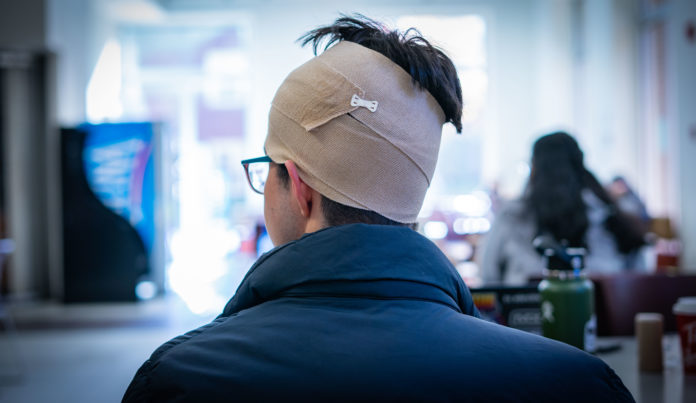

The NFL has had a long-standing issue with concussions, one that grew when Miami Dolphins quarterback Tua Tagovailoa was rushed to a hospital after hitting his head during a tackle by a player from the Cincinnati Bengals.
It was the second time Tagovailoa seriously injured himself after also hitting his head during a game against the Buffalo Bills five days prior. He returned to that game after displaying gross motor instability, an NFL no-go that requires a player to be removed from a game entirely.
Mackenzie Gillespie-Tracey, an athletic therapist for the STU Tommies, said there’s a lot of pressure in pro sports on promoting a quick return instead of a healthy return.
“It’s almost like you’re damned if you do, damned if you don’t,” she said.
In the game against the Bengals, Tagovailoa — after being cleared to play — hit his head again after being tackled and, because of second impact syndrome, was rushed to the hospital, where he was diagnosed with a concussion.
“[Second impact syndrome] causes rapid swelling of the brain because it’s already had trauma and potentially still is somewhat swollen. It’s a rare thing, but it’s almost always fatal,” said Gillespie-Tracey.
“The time you can have from that hit until someone has completely lost consciousness and is rapidly losing vitals can be as short as five minutes.”
The NFL and NFL Players Association investigated Tagovailoa’s situation, and fired the unaffiliated neurotrauma consultant after it was determined that he did not follow all the necessary medical protocols, despite following the NFL rule book step-by-step.
The NFLPA added Ataxia, characterized by the Mayo Clinic as “poor muscle control that causes clumsy voluntary movements,” to its concussion protocol list after it was displayed by Tagovailoa.
“I really hope all medical staff have athletes’ best interest in mind and those mistakes weren’t something they regularly do,” said Gillespie-Tracey. “Hopefully it was just a one-off thing, but that’s the problem in this field of work — you can’t really afford to have those one-offs.”
Last year, St. Thomas University rugby player Tiger Levi was certain he had a concussion after his rugby game but was never checked out by the trainers or doctors because it occurred from whiplash and not contact.
“During the game, I was fine. It was just after the game I started showing symptoms,” Levi said. “I probably should have gone to a doctor, but I waited about two or three weeks ’til all the symptoms went away.”
Levi said he always takes precaution because he knows the dangers of Chronic Traumatic Encephalopathy (CTE), a term used by the Mayo Clinic to describe brain degeneration likely caused by repeated head traumas.
Levi said he feels safe on the rugby pitch because the referees do their best to make sure it’s a safe game. Gillespie-Tracey said STU Athletics follows a strict concussion protocol for any player they suspect has a concussion.
“If there’s any hits to the head, they’re automatically pulled from play. They go through our concussion assessment on- and off-field,” said Gillespie-Tracey. “Then we’ll start a return-to-play protocol and that’s a five-step process, then they have to get a doctor’s clearance to return.”
The five steps involve elevating heart rate to 75 per cent effort; return to light activity; non-contact practices; full contact practices and a full organized game.
When asked about what changes they would make so sports like rugby and football are safer when it comes to head injuries, Gillespie-Tracey said no one has any answers.
“I don’t know if they ever will,” she said.
